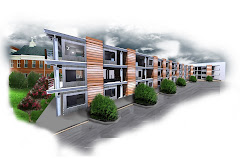
Abstract
This investigation will explore how modern technologies can be used to produce prefabricated housing for those who have been devastated by natural disasters. Through the production of 3D models created by 3D printing machines, space and adaptability within prefabricated units will be investigated to study the way in which a residence can be designed to accommodate multiple users. This investigation will inform how products can be mass produced for quick disbursement to those without basic housing while still allowing for customization to the individual user's needs.Significance of Issues
"Belief in the significance of architecture is premised on the notion that we are, for better or for worse, different people in different places." The current applications of disaster housing vary due to the nature of the disaster. Disaster housing can range from short-term shelters to permanent housing. Generally, establishing these shelters is well choreographed on the local level as organizations execute their emergency plans. The challenge presents itself when individuals are displaced for longer periods of time. The ability to meet individual and household needs become more difficult. While in the past, this plan has been effective, it failed to provide adequate housing for those who were displaced by Hurricane Katrina in August 2005. Now, more than 3 years later, the struggle to correct the issues brought to light by Hurricane Katrina is ongoing. Prefabricated housing was first built after World War II as a temporary replacement for housing that had been destroyed by bombs. Prefabricated housing requires less labor as compared to conventional housing; this combined with the goal of mass customization which is to lower costs through recourse to large scale, serial production, while satisfying the individual requirements of the users provides a platform for this investigation.Scope of Limitations
The scope of this investigation will be limited to 3 generalized user groups due to time restrictions; a single user, a husband and wife, and a husband and wife with two children. One goal for this research is to design a product that is adaptable to multiple users, thus the multiple user groups. Additional limitations addressed throughout the process will be the lack of experience with the chosen digital aid. Further research into the methods used in 3D printing will be imperative to this investigation, as well as continued research of the needs of those suffering from devastating disasters, and the methods used in mass production, and mass customization.
Expectations of Outcome
The expected outcome of this investigation is a coherent model that will aid in the analysis of the applied methods of mass customization to prefabricated housing. The gathered information from this research will also aid designers in the further development, and assessment of the forms used in disaster housing that will improve the quality of life for those who have lost everything.
The expected outcome of this investigation is a coherent model that will aid in the analysis of the applied methods of mass customization to prefabricated housing. The gathered information from this research will also aid designers in the further development, and assessment of the forms used in disaster housing that will improve the quality of life for those who have lost everything.



No comments:
Post a Comment